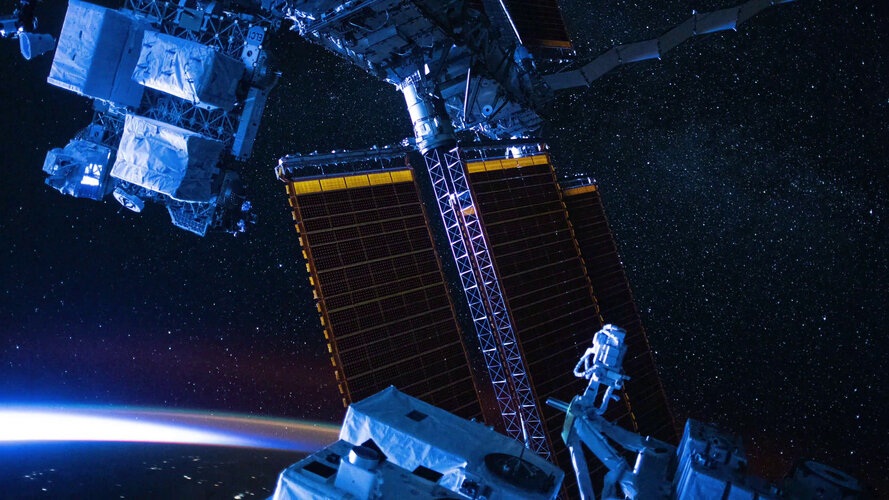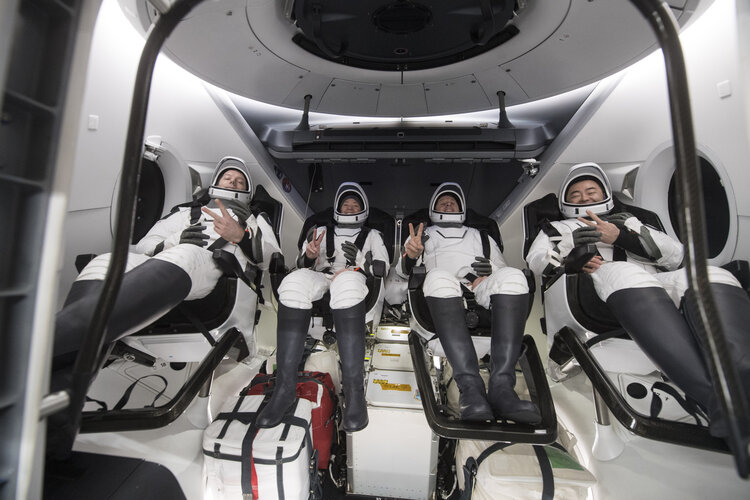
Copernical Team
Airbus and Vietnam strenghthen partnership on Space Observation
 France and Vietnam have decided to strengthen their existing cooperation on Space domain. On November 3, in the presence of French and Vietnamese Prime Ministers, VAST, CNES and Airbus signed a Letter of Intent on cooperation related to Earth-Observation satellite implementation.
This cooperation is aimed at facilitating the implementation of the "Vietnam Space Technology Program 2020 - 20
France and Vietnam have decided to strengthen their existing cooperation on Space domain. On November 3, in the presence of French and Vietnamese Prime Ministers, VAST, CNES and Airbus signed a Letter of Intent on cooperation related to Earth-Observation satellite implementation.
This cooperation is aimed at facilitating the implementation of the "Vietnam Space Technology Program 2020 - 20 Mystery object detected near China's space debris cleaner fuels fears of 'satellite-crushing weapon'
 China launched its Shijian 21 satellite into orbit from Xichang late in October on a mission to "test and verify space debris mitigation technologies". However, the launch triggered fears in the US military that Beijing had unveiled a new "satellite-crushing" weapon to achieve superior space attack systems.
US space tracking has detected a mysterious object orbiting along with China's Shij
China launched its Shijian 21 satellite into orbit from Xichang late in October on a mission to "test and verify space debris mitigation technologies". However, the launch triggered fears in the US military that Beijing had unveiled a new "satellite-crushing" weapon to achieve superior space attack systems.
US space tracking has detected a mysterious object orbiting along with China's Shij Tiny grains, severe damage: Hypervelocity dust impacts on a spacecraft produce plasma explosions and debris clouds
 The Parker Solar Probe spacecraft, NASA's newest and most ambitious effort to study the sun, has broken a lot of records: it has gotten closer to the sun than any other spacecraft to date, its instruments have operated at the hottest temperatures, and the probe is the fastest human-made object ever. But those records come at a cost: The spacecraft is moving so fast that running into even a tiny
The Parker Solar Probe spacecraft, NASA's newest and most ambitious effort to study the sun, has broken a lot of records: it has gotten closer to the sun than any other spacecraft to date, its instruments have operated at the hottest temperatures, and the probe is the fastest human-made object ever. But those records come at a cost: The spacecraft is moving so fast that running into even a tiny Digantara and OrbAstro announce service agreement for space debris tracking mission on 6U satellite
 Digantara Research and Technologies has signed a contract with Orbital Astronautics Ltd to fly its SCOT (Space-based space Climate and Object Tracker) payload onboard an ORB-6 satellite platform launching towards the end of 2022.
The mission will focus on demonstration of a novel LiDAR-based technology developed by Digantara, and will serve as the pilot for their LEO constellation providin
Digantara Research and Technologies has signed a contract with Orbital Astronautics Ltd to fly its SCOT (Space-based space Climate and Object Tracker) payload onboard an ORB-6 satellite platform launching towards the end of 2022.
The mission will focus on demonstration of a novel LiDAR-based technology developed by Digantara, and will serve as the pilot for their LEO constellation providin ISS astronauts return to Earth in SpaceX craft after 6-month mission
 Four astronauts returned to Earth Monday in a SpaceX craft after spending six months on the International Space Station, a NASA live broadcast showed, marking the end of a busy mission.
The international crew conducted thousands of experiments in orbit and helped upgrade the solar panels on the ISS during their "Crew-2" mission.
Its descent slowed by four huge parachutes, their Dragon sp
Four astronauts returned to Earth Monday in a SpaceX craft after spending six months on the International Space Station, a NASA live broadcast showed, marking the end of a busy mission.
The international crew conducted thousands of experiments in orbit and helped upgrade the solar panels on the ISS during their "Crew-2" mission.
Its descent slowed by four huge parachutes, their Dragon sp Virgin Galactic has sold 100 more space tickets
 Virgin Galactic has sold around 100 tickets since flying its founder Richard Branson to space last summer, with commercial services expected to begin by the end of 2022, the company said in its financial results Monday.
The current price of the fare is $450,000 per seat, well above the $200,000-$250,000 paid by some 600 customers from 2005 to 2014.
In total, the company has now sold 70
Virgin Galactic has sold around 100 tickets since flying its founder Richard Branson to space last summer, with commercial services expected to begin by the end of 2022, the company said in its financial results Monday.
The current price of the fare is $450,000 per seat, well above the $200,000-$250,000 paid by some 600 customers from 2005 to 2014.
In total, the company has now sold 70 Space Station tour with your guide Thomas, in 4K (in French with subtitles)
 Video:
00:24:50
Video:
00:24:50
JoinESA astronaut Thomas Pesquet on a tour of the International Space Station. On his second space mission Alpha, Thomas flew to space from Florida, USA, as part of Crew-2 in the SpaceX Crew Dragon Endeavour together with NASA astronauts Megan McArthur, Shane Kimbrough and JAXA astronaut Aki Hoshide
In this guided tour, a first shot in 4K, Thomas takes you through the modules of the International Space Station including the Dragon. Recorded in October 2021 the Space Station had just seen the departure of Soyuz MS-18 and the relocation of a Progress supply spacecraft. On board where also NASA
Stars and solar panels from Space Station
 Video:
00:00:47
Video:
00:00:47
Timelapse video made during ESA astronaut Thomas Pesquet’s second mission to the International Space Station, “Alpha”. The camera is setup to take pictures at intervals of two a second, and the pictures are then edited into this video that plays at 25 pictures a second. The camera was setup in the Japanese Kibo module and shows the solar arrays moving as they prepare to track the Sun when the Space Station flies back into sunlight. The new IROSA solar array upgrades can be seen that Thomas and NASA astronaut Shane Kimbrough installed over the course of three
Dragon Endeavour tour
 Video:
00:01:45
Video:
00:01:45
ESA astronaut Thomas Pesquet is sharing scenes from life on board the International Space Station during his second mission “Alpha”. Here he gives a quick tour of the SpaceX Cargo Dragon Endeavour that brought him to the Space Station together with JAXA astronaut Aki Hoshide and NASA astronauts Shane Kimbrough and Megan McArthur. The same astronauts, Crew-2, will use the spacecraft to return home after undocking with the Station and fly to Earth for a splashdown off the coast of Florida, USA.
Over 200 experiments are planned during Thomas’ time in space, with 40 European ones and 12
ESA astronaut Thomas Pesquet returns after an action-packed six months in orbit

